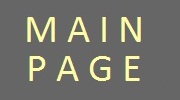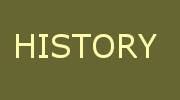MAIN MARKET UNDERGROUND MUSEUM
The Museum presents various aspects of medieval life. It explains: development of royal Krakow, international trade and position of Krakow in Europe, the meaning of Hanseatic League, different aspects of life and funeral customs of the townspeople in 13-15 centuries, etc.
Contemporary Museum is situated 5 meters below the ground and discovers the life of 13-17 century Krakow. How is it possible that it lies below the ground? How did the ground raise about 4 meters? The answer is easy. The market square was a merchant place, always full of people, trading or just coming to the market to look, to here, to talk. People, by stepping tamped the ground. Such ground becomes waterproof. So, after rains water stays longer, creating pools. To dry such pools, people used to fill with sand, sawdust or ash. But after some time new pools were formed, so in another place one covered wet place, etc.
Such drying method the townspeople practiced for about 400 years, but it created several new problems. The level raised a lot and ground floors of the buildings became undergrounds. Already in 17th century the council change the method. From time to time scraped off external level of the ground. The level of the Market square stopped growing.
Nowadays, the Main Market is a great archaeological site to examine the life of middle ages Krakow. In the layers under contemporary Krakow archaeologists found various artifacts describing life of medieval Krakow, Poland, Europe. Among the tools excavated under the Main Market archaeologists found children’s toys, jewelry, coins and seals. Jewelry, toys and coins people were losing by accident, mostly women, according to the fashion dressed with gloves and rings on the gloves. Such style evoked loosing jewelry more often than from naked hands.
The museum keep the richest collection of seals. Before a merchant could leave certain town, he had to get a stamp on his goods. It was a kind of medieval custom duty. After arriving to another town, he presented plumbed goods, the old ones were throwing away and the goods sealed with new.
Medieval Krakow was involved in international net of trail routes, like other great towns in Europe had privileges:
1. Route compulsion – any merchant had to choose certain way to visit Krakow, he had to pay the toll. In return, he got guaranty from the duke for his goods. Any who tried to attack a merchant following the route, risked death penalty.
2. Staple right - any merchant had to sell goods and then buy the same goods with higher price. He got a seal and his goods, the merchandise was measured according to Krakow measure system, and then could leave Krakow for another town.
Several towns in medieval Europe had such privileges: Nuremberg, Kosice, Buda (nowadays Budapest), Wroclaw. It brought prosperity and richness. What is more, Krakow belonged to another net of trade – Hanseatic League. Hanseatic League united towns lying in the core of the Baltic Sea. Krakow, by connection with Vistula River, belonged to the net.
Under the present Main Market there were two cemeteries, one surrounding the Saint Adalbert’s church, second surrounding Our Lady (Mariacki) church. While archaeological excavation took place, some burial places were found. Next to typical Christian burials, anti-vampire graves were found. Those, anti-vampire graves have the skulls between legs. The exhibitions shows plastic copies of the skeletons, human bones were taken to Mariacki church. But the exhibition shows only real skulls. First, keeps trepanation traces. Anthropological examination proves that the man lived after trepanation about 3 weeks. Second skull dated back to the mid of 17th century (Swedish invasion) presents a man of typical Nordic measures. One neck-bone is smashed, it proves he was decapitated.
In the end of the exhibition a horse is buried. Some historians think, it was ritual burial, but most scientists consider the grave just as a simple whole where death horse was buried.













